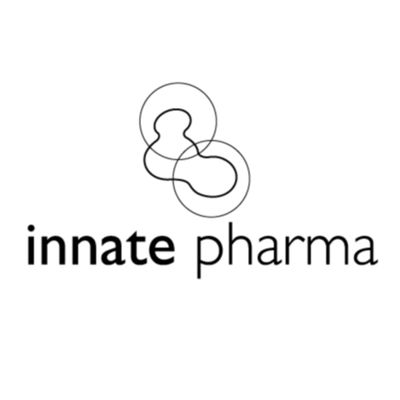预约演示
更新于:2025-05-07
B lymphoblastic leukemia lymphoma
B淋巴细胞白血病淋巴瘤
更新于:2025-05-07
基本信息
别名 B Lymphoblastic Leukemia/Lymphoma、B lymphoblastic leukaemia lymphoma、B lymphoblastic leukemia lymphoma + [11] |
简介 A neoplasm of lymphoblasts committed to the B-cell lineage, typically composed of small to medium-sized blast cells. When the neoplasm involves predominantly the bone marrow and the peripheral blood, it is called B acute lymphoblastic leukemia. When it involves nodal or extranodal sites, it is called B lymphoblastic lymphoma. (WHO, 2001) |
关联
20
项与 B淋巴细胞白血病淋巴瘤 相关的药物靶点 |
作用机制 CD22抑制剂 |
在研机构 |
原研机构 |
在研适应症 |
最高研发阶段批准上市 |
首次获批国家/地区 美国 |
首次获批日期2018-09-13 |
靶点 |
作用机制 CD19调节剂 [+1] |
在研适应症 |
非在研适应症 |
最高研发阶段批准上市 |
首次获批国家/地区 美国 |
首次获批日期2017-08-30 |
作用机制 CD19抑制剂 [+1] |
在研机构 |
原研机构 |
在研适应症 |
非在研适应症 |
最高研发阶段批准上市 |
首次获批国家/地区 美国 |
首次获批日期2014-12-03 |
35
项与 B淋巴细胞白血病淋巴瘤 相关的临床试验NCT06710418
Red Blood Cell Transfusion Threshold-Specific Bleeding, Quality of Life and Functional Outcomes in Acute Leukemia Patients With Thrombocytopenia: a Randomized Feasibility Study
This clinical trial evaluates the effects of hemoglobin threshold-specific packed red blood cell (PRBC) transfusions on quality of life and functional outcomes in patients who have undergone chemotherapy or an allogeneic hematopoietic stem cell transplant for a high-grade myeloid neoplasm, acute myeloid leukemia, or B acute lymphoblastic lymphoma/leukemia. Some types of chemotherapy and stem cell transplants can induce low platelet counts and/or anemia that requires PRBC transfusions. Given critical shortages in blood supply, and risks associated with transfusion of PRBC, there has been much investigation into the "minimum" hemoglobin level that effectively balances safety and toxicity in patients. This clinical trial evaluates the effects of giving PRBC transfusions based on a more restrictive hemoglobin threshold (> 7 gm/dL) compared to a more liberal hemoglobin threshold (> 9 gm/dL) on quality of life and functional outcomes. A more restrictive threshold may be just as effective at maintaining patient quality of life and function while decreasing side effects from blood transfusions and helping to conserve blood supply resources.
开始日期2025-07-01 |
申办/合作机构 |
NCT06709469
A Phase I Clinical Trial of CART Cell Therapy for Refractory/ Relapsed Acute Lymphoblastic Leukemia With Unmet Needs in Children, Adolescents and Young Adults: Feasibility and Safety Study (REALL_CART).
The goal of this clinical trial is to test the feasibility and safety of an academic production of two different anti-CD19 chimeric antigen receptor T cells (CART) products according to the different biomarkers of the disease in children and young adults with relapsed/refractory CD19+ B cell acute lymphoblastic leukemia (r/r B-ALL) or relapsed/refractory T-cell acute lymphoblastic leukemia (r/r T-ALL). The main questions it aims to answer are:
1. The safety and feasibility of autologous CART-19/22 in children, adolescents and young adults with a CD19+/- CD22+ relapse/ refractory disease for a r/r B-ALL.
2. The safety and feasibility of allogeneic CART-NKG2D (chimeric-antigen receptor Natural-killer group 2, member D) in children, adolescents and young adults with r/r T-ALL.
1. The safety and feasibility of autologous CART-19/22 in children, adolescents and young adults with a CD19+/- CD22+ relapse/ refractory disease for a r/r B-ALL.
2. The safety and feasibility of allogeneic CART-NKG2D (chimeric-antigen receptor Natural-killer group 2, member D) in children, adolescents and young adults with r/r T-ALL.
开始日期2025-06-01 |
NCT06861348
Effectiveness and Safety of Inotuzumab Ozogamicin±Donor Lymphocyte Infusion for Relapsed B Cell Acute Lymphoblastic Leukemia/Lymphoblastic Lymphoma After Allogeneic Hematopoietic Stem Cell Transplantation:Phrase II, Multicenter Study
B cell acute lymphoblastic leukemia (B-ALL)/Lymphoblastic lymphoma (LBL) is a hematological malignancy caused by malignant transformation and clonal expansion of B-lineage precursor cells. Allogeneic hematopoietic stem cell transplantation (allo-HSCT) remains a potential curable therapy for ALL, especially for high-risk ALL patients. However, post-HSCT recurrence is the primary cause of transplant failure and salvage treatment option for this patient population are very limited. Current data showed that the CR rate and overall survival (OS) in adults with ALL who relapse after transplantation are as low as 30% and 25%, respectively, and the prognosis is extremely dismal. Some researchers have successfully salvage treated relapsed B-ALL patients after transplantation with donor lymphocyte infusions (DLI), but the response rate of DLI alone is usually less than 10%, with increased risk of Graft-Versus-Host Disease (GvHD). In the immunotherapy era, the introduction of immuno-designed therapies like bispecific antibody constructs, antibody conjugates, as well as chimeric antigen receptor T cell (CAR-T) therapy, have immensely broadened the treatment landscape of relapsed or refractory (r/r) B-ALL. Inotuzumab ozogamicin (InO) is a CD22-targeted monoclonal antibody conjugated to the cytotoxic antibiotic calicheamicin. Based on the pivotal Phase III INO-VATE clinical trial published in N Engl J Med in 2016, compared to standard chemotherapy, 73% (64/88) of r/r B-ALL patients treated with InO achieved CR/CRi in the first cycle. Superior CR duration, OS and relapse free survival (RFS) was also observed in the InO group. Subgroup analysis showed that the treatment benefits were consistent for patients who relapsed after allo-HSCT. Moreover, a single-center retrospective study attempted to salvage treat relapsed B-ALL patients after transplantation with combined InO and DLI, results showed that six out of eight patients achieved CR after the first InO course and 75% of patients obtained MRD negativity after the second course, which is quite satisfactory. Therefore, we designed a Phase II clinical study of InO combined with or without DLI in patients with recurrent acute B-ALL/LBL after allo-HSCT, with expectation to increase CR rate and improve long-term survival.
开始日期2025-03-01 |
申办/合作机构 |
100 项与 B淋巴细胞白血病淋巴瘤 相关的临床结果
登录后查看更多信息
100 项与 B淋巴细胞白血病淋巴瘤 相关的转化医学
登录后查看更多信息
0 项与 B淋巴细胞白血病淋巴瘤 相关的专利(医药)
登录后查看更多信息
500
项与 B淋巴细胞白血病淋巴瘤 相关的文献(医药)2025-12-01·Journal of Hematopathology
CD3/CD20/CD45 negative leukemia cutis
Article
作者: Tsvetnov, Ilya ; Lyapichev, Kirill A ; Haiduk, Ihar
2025-04-19·American Journal of Clinical Pathology
How I diagnose high-grade B-cell lymphoma
Review
作者: Gibson, Sarah E ; Moore, Erika M
2025-04-01·Cancer Genetics
MYC-r with a non-IG partner concurrently with a cryptic t(12;21) in B-lymphoblastic leukemia: A case and prognostic significance
Article
作者: Chen, Weina ; Garcia, Rolando ; Fuda, Franklin ; Koduru, Prasad ; Pacheco, Martha
69
项与 B淋巴细胞白血病淋巴瘤 相关的新闻(医药)2025-04-21
·医药速览
一、治疗单倍体造血干细胞移植后难治性造血重建不良造血重建不良(PHR)是异基因造血干细胞移植(allo-HSCT)的严重并发症,表现为植人功能不良(PGF)或持续性血小板减少(PT)。文献报道PGF 的发生率为5%~27%,原发PT发生率为10.1%。PGF及PT均可导致非复发死亡增加,严重影响移植预后。目前尚无标准治疗办法,常用治疗手段包括输血支持、二次移植、供者淋巴细胞输注和促造血生长因子等,但输血支持伴随输注相关铁过载等不良反应,二次移植或 DLI可致非复发死亡率升高和GVHD发生。目前allo-HSCT后PHR的发生机制尚未阐明,可能与CD34细胞数量或质量受损有关。输注纯化供者CD34+细胞可促进患者造血干/祖细胞重建,据文献报道治疗PHR的有效率为58.3%~100%。北京大学人民医院对接受纯化供者 CD34+输注的8例单倍体造血干细胞移植后难治性PHR患者进行了回顾性分析。8 例难治性PHR患者中包括5例继发性PGF,3例原发性PT;中位年龄31.5岁。再生障碍性贫血2例,骨髓增生异常综合征3例,急性B淋巴细胞白血病2例,急性髓系白血病1例。所有患者接受清髓性预处理。输注纯化CD34+细胞中位数为1.74(1.03~3.28)E6/Kg。8 例 PHR 患者输注纯化供者 CD34+细胞时均为完全供者型,7例患者骨髓穿刺涂片未见巨核细胞。8例Haplo-HSCT后患者基线、CD34+细胞输注情况及疗效如下:CD34+细胞受损是造血重建不良的可能机制之一,也是输注纯化CD34+细胞的理论基础,部分PHR患者对两种或三种以上促造血治疗无效,这些难治患者的造血重建是亟需解决的难题。这项研究中的 8 例难治性 PHR 患者接受纯化供者 CD34+细胞输注后5例造血恢复,无输注相关急性GVHD发生,2例发生慢性GVHD,提示纯化供者CD34+细胞输注是治疗难治性PHR的有效方法。二、改善CAR T细胞治疗后的血细胞减少症CART细胞治疗是一种针对复发难治性B细胞恶性肿瘤的免疫疗法,已显著改善患者预后,但其常见副作用之一是持续性血细胞减少症,包括中性粒细胞减少、血小板减少和贫血,可能导致感染、出血和输血依赖,增加发病率和死亡率。对于接受过异基因造血干细胞移植后接受CART细胞治疗且出现持续性血细胞减少症的患者,使用供体CD34+细胞(CD34+ selected stem-cell boost,SCB)可以改善血细胞减少症,类似于其在SCT后移植功能不良中的应用。2016年5月至2021年12月,英国两个中心的101名儿童和年轻成人r/r B-ALL患者接受了CAR T细胞治疗。对于接受过异基因造血干细胞移植且在CART细胞治疗后出现持续性血细胞减少症的患者,使用供体纯化的CD34+细胞(SCB)进行治疗。SCB的适应症包括输血依赖、粒细胞集落刺激因子(G-CSF)依赖以及3级及以上贫血、血小板减少症和/或中性粒细胞减少症。患者基线特征如下:共有7名患者接受了CD34+纯化的SCB治疗,在5名可评估的患者中,4名患者的中性粒细胞计数恢复至>1×10^9/L,无需G-CSF支持;4名患者在中位33天(范围4-106天)内实现脱离血小板输注。中位随访9个月后,7名患者中3名出现B-ALL复发,2名死于感染并发症,2名存活且完全恢复造血功能。1名患者在SCB后第10天出现2级CRS,但未观察到急性或慢性移植物抗宿主病(GVHD)。CD34+纯化的SCB在治疗CAR T细胞治疗后的持续性血细胞减少症中表现出良好的耐受性,未观察到GVHD。可以改善部分患者的血细胞减少症,但需要在CAR T细胞水平降低且骨髓炎症环境稳定后进行。对于接受CD19 CAR T细胞治疗后3个月仍存在严重血细胞减少症或严重感染的患者,建议使用CD34+纯化的SCB进行治疗,推荐最低CD34+细胞剂量为3×10^6/kg。这项研究表明文章表明,CD34+选择的干细胞增强在治疗CART细胞治疗后的持续性血细胞减少症中具有潜在的应用价值,但需要在更大样本量和前瞻性研究中进一步验证其安全性和有效性。三、小结纯化供者CD34⁺细胞输注在改善造血功能、减少移植相关并发症以及治疗难治性血液系统疾病方面具有广泛的应用前景,主要优势在于安全性高、疗效显著,并且可以通过去除免疫细胞降低GVHD的风险。但其应用仍需在更大样本量和前瞻性研究中进一步验证其安全性和有效性。补充知识:HLA全相合的同胞供者(Matched Sibling Donor, MSD)和单倍体相合供者(Haploidentical Donor)的主要区别在于供者与受者之间的HLA匹配程度,MSD供者与受者的HLA完全匹配,即供者和受者在所有重要的HLA位点上完全一致;单倍体相合供者与受者的HLA部分匹配,通常只需要一半的HLA位点匹配。MSD供者通常为患者的兄弟姐妹,且只有约30%的患者能找到完全匹配的同胞供者;单倍体相合供者来源更广泛,包括父母、子女、兄弟姐妹等,几乎每个患者都能找到合适的单倍体供者。因此,Haplo-HSCT(单倍体造血干细胞移植)已成为全相合移植的重要替代方案,尤其适用于缺乏HLA完全匹配供者的患者。参考文献:1:Mullanfiroze K, Lazareva A, Chu J, et al. CD34+-selected stem cell boost can safely improve cytopenias following CAR T-cell therapy. Blood Adv. 2022;6(16):4715-4718. doi:10.1182/bloodadvances.2022007572.2:何云,马瑞,王慧芳,等. 纯化供者CD34 +细胞输注治疗单倍体造血干细胞移植后难治性造血重建不良8例临床分析 [J]. 中华血液学杂志,2023,44(12):1027-1031. DOI:10.3760/cma.j.issn.0253-2727.2023.12.010.推文用于传递知识,如因版权等有疑问,请于本文刊发30日内联系医药速览。原创内容未经授权,禁止转载至其他平台。有问题可发邮件至yong_wang@pku.edu.cn获取更多信息。©2021 医药速览 保留所有权利往期链接“小小疫苗”养成记 | 医药公司管线盘点 人人学懂免疫学| 人人学懂免疫学(语音版)综述文章解读 | 文献略读 | 医学科普|医药前沿笔记PROTAC技术| 抗体药物| 抗体药物偶联-ADC核酸疫苗 | CAR技术| 化学生物学温馨提示医药速览公众号目前已经有近12个交流群(好学,有趣且奔波于医药圈人才聚集于此)。进群加作者微信(yiyaoxueshu666)或者扫描公众号二维码添加作者,备注“姓名/昵称-企业/高校-具体研究领域/专业”,此群仅为科研交流群,非诚勿扰。简单操作即可星标⭐️医药速览,第一时间收到我们的推送①点击标题下方“医药速览” ②至右上角“...” ③点击“设为星标
细胞疗法免疫疗法临床结果临床研究
2025-04-11
EBMT 2025异基因造血干细胞移植(allo-HSCT)是治疗多种血液系统疾病的重要手段,但在围移植期,如移植时机、巩固治疗、维持治疗等方面,仍面临一些亟需解决的问题。在近日召开的第51届欧洲血液与骨髓移植学会年会(EBMT 2025)上,上海交通大学医学院附属瑞金医院胡晓霞教授团队有多项研究成果入选,特别是针对白血病的整体治疗及移植衔接的几项研究(B254、B259、A001)备受关注,为临床实践提供了重要参考。《肿瘤瞭望-血液时讯》现场特邀胡晓霞教授,深入解读这3项研究的内容。胡晓霞教授:在本次会议中,瑞金移植团队共有1项口头报告和3项壁报入选。在这些壁报中,我们重点关注了白血病的整体治疗以及移植的衔接问题。第一项是关于核心结合因子-急性髓系白血病(CBF-AML)的研究(B254)。尽管CBF-AML有两个亚型,但目前这两个亚型的移植时机基本一致。我们的回顾性和前瞻性队列的中期汇报数据分析发现,CBFβ::MYH11亚型的移植时机与经典的RUNX1::RUNX1T1亚型存在差异。因此,我们主张对这两个亚型进行区分处理。我相信,很多血液学专家在这两个亚型的临床处理中也都有非常相似的体会。第二项研究聚焦于贝林妥欧单抗在异基因造血干细胞移植前最后一次巩固治疗中的临床应用价值(B259)。贝林妥欧单抗能够加深急性B淋巴细胞白血病(B-ALL)患者的缓解深度。然而,哪些患者能够真正从移植前的贝林妥欧单抗维持治疗中获益,依然是一个备受关注的问题。我们研究发现,对于复发/难治的B-ALL患者,在移植前使用贝林妥欧单抗作为最后一次巩固治疗,对改善移植结局具有显著的积极影响。而对于那些在移植前已经获得第一次缓解,且可测量残留病灶(MRD)阴性、深度缓解的B-ALL患者,使用贝林妥欧单抗作为维持治疗,对移植结局的改善作用并不明显。第三项研究则探讨了移植后维持治疗的适宜人群(A001)。目前,移植后维持治疗,尤其是去甲基化药物(HMA)治疗,已被广泛应用于临床实践。然而,究竟哪些高危患者能够真正从HMA维持治疗中获益,不同移植中心在实践中体会各异。为了深入探究这一问题,我们回顾性分析了近500例移植患者数据。研究发现HMA维持治疗对伴有骨髓增生异常综合征(MDS)相关基因突变的患者具有显著治疗价值。而对于那些在移植前已经获得深度缓解的高危患者,移植后的维持治疗并未带来额外的生存获益。因此,我们希望通过这些回顾性数据,为后续的前瞻性研究提供有力依据,从而优化整体的移植治疗策略。研究简介B254合并CBFβ::MYH11融合基因成人AML患者的移植决策Optimization strategies for transplant recommendation for adult AML patients with CBFβ::MYH11 fusion第一作者:黄静涛 通讯作者:胡晓霞伴随染色体inv(16)(p13q22)或t(16;16)(p13;q22)易位的急性髓系白血病(AML)可形成CBFβ::MYH11融合基因,这类AML被归类为核心结合因子白血病(CBFβ-AML)。尽管根据NCCN指南和ELN危险度分层,CBF-AML属于预后良好组(尤其在接受强化疗时),但仍有约30%~40%患者复发。目前,CBFβ-AML最佳移植时机尚不明确。本研究为多中心、回顾性研究。纳入2015年3月至2023年8月期间确诊的175例伴有CBFβ::MYH11-AML病例。入组标准包括:(1)预期生存期≥3个月;(2)病历资料完整。通过多参数流式细胞术(MFC)检测骨髓(BM)中的可测量残留病(MRD),并采用定量聚合酶链反应(qRT-PCR)及二代测序技术评估CBFβ::MYH11转录本水平及其他伴随突变。MFC-MRD阳性定义为骨髓中原始细胞≥0.01%;若骨髓中CBFβ::MYH11转录本(以CBFβ::MYH11/ABL1拷贝数比值表示)较治疗前下降<3-log,则判定为分子学MRD应答不佳(Mol-MRD阳性)。共有135例可评估患者,根据后续治疗方式分为两组:化疗组(n=61)和allo-HSCT组(n=74)。Allo-HSCT组的3年EFS显著优于化疗组(89.1%比69.6%,P=0.044),但两组的3年OS无显著差异(92.3%比87.9%,P=0.9)。巩固治疗2个周期后MFC-MRD阳性和/或Mol-MRD阳性患者,化疗组与allo-HSCT组的3年OS均无统计学差异(50%比91%,P=0.3;90.9%比91%,P=0.7)。酪氨酸激酶信号通路相关基因(KIT/FLT3/RAS)突变频率最高,但治疗方式(化疗或allo-HSCT)对伴随KIT D816、KIT D419及FLT3-ITD突变的CBFβ::MYH1 AML患者的长期生存均无显著影响。此外,CR1对比CR2期接受移植的患者,其3年OS亦无显著差异(91.2%比80.8%)。因此,allo-HSCT可进一步改善伴CBFβ::MYH11融合基因的AML患者, EFS但未显著提升OS。传统高危因素(如巩固治疗2个疗程后MRD应答不佳或不良突变)并未影响患者长期生存。上下滑动查看更多B259贝林妥欧单抗桥接异基因造血干细胞移植方案可使复发难治性或持续可检测残留病灶(MRD)阳性的急性B淋巴细胞白血病患者显著获益B-cell acute lymphoblastic leukemia patients with relapsed/refractory or persistent MRD benefit from blinatumomab bridging prior to allo-HSCT第一作者:黄佳瑜 通讯作者:胡晓霞异基因造血干细胞移植是治疗急性B淋巴细胞白血病(B-ALL)的有效方法。然而,移植后复发(约50%)仍然是治疗失败的主要原因,特别是在移植前评估为可测量残留病灶(MRD)阳性的患者。贝林妥欧单抗(Blinatumomab,blina)是一种双特异性CD3和CD19单克隆抗体,通过引导细胞毒性T淋巴细胞裂解CD19阳性细胞来发挥抗肿瘤作用,显示出良好的临床疗效。然而,blina桥接移植是否可以改善MRD阴性的B-ALL患者的预后尚不清楚。研究纳入了在2021年5月至2024年7月接受同种异体造血干细胞移植的133名MRD阴性B-ALL患者,分为三组:A组(仅接受化疗后MRD阴性,n=47),B组(化疗后MRD阳性并使用blina后MRD阴性,n=54), C组(化疗后MRD阴性并使用blina巩固,n=32)。 与C组患者相比,A组患者移植前接受了更多周期的巩固治疗。B组患者表现为更差的预后,51.9%(n=28)的患者为复发/难治性(R/R)B-ALL,且29.6%(n=16)的患者在一个周期诱导化疗后未能达到完全缓解。57.4%(n=31)的B组患者接受至少2个周期治疗从而达到MRD阴性。三组患者1年总生存率为97.9%比88.3% vs. 90.2%(P=0.28),无病生存率为78.6%比73.8% vs. 79.8%(P=0.70);复发率为14.2%比19.8% vs.3.1%(P=0.10);非复发死亡率分别为0%比6.5% vs. 6.6%(P=0.24)。以上研究提示,MRD阴性的B-ALL无论是否在同种异体造血干细胞移植前桥接贝林妥欧单抗,其移植结局无差异;而R/R或持续MRD持续阳性的患者在接受贝林妥欧单抗桥接移植后可获得与化疗敏感的B-ALL患者一致的预后。因此,贝林妥欧单抗可优化B-ALL患者移植时机。上下滑动查看更多A001造血干细胞移植后去甲基化药物(HMA)维持治疗改善合并骨髓增生异常相关基因突变(MR)的成人高危AML患者长期生存Myelodysplasia-related genetic mutations are associated with improved survival following HMA maintenance treatment after allo-HSCT in AML patients with adverse-risk第一作者:黄佳瑜 通讯作者:胡晓霞异基因造血干细胞移植(allo-HSCT)后去甲基化药物(HMA)维持治疗可降低急性髓系白血病(AML)患者移植后复发率,提高移植后生存结局。但哪些患者能获益于移植后HMA维持治疗尚不明确。研究纳入2017年1月至2023年4月在8家医院接受异基因造血干细胞移植的469例高危AML患者。所有患者分为维持组(MT组,n=136)和非维持组(NMT组,n=333)。MT组患者中位维持治疗疗程为4(范围:2-6)次,维持开始的中位时间为移植后3.8(范围:2.8-5.9)个月。两组患者中位随访时间为28.2(范围:17.5-28.2)个月,MT组及NMT组患者移植后3年无事件生存率(EFS)为67.9%比52.1% (P=0.005),复发率为20.0%比24.4% (P=0.368),无复发生存(RFS)69.9%比58.8% (P=0.032),总生存率(OS)为75.4%比67.5%(P=0.041)。在多因素分析中,维持治疗是移植后独立保护性预后因素。亚组分析发现,伴有骨髓增生异常相关基因突变的患者从HMA维持治疗中获益最大(OS:HR 0.48 , P=0.008;EFS:,P=0.005),且CR1合并MRD阳性的患者更为显著。此外,维持治疗也可改善有KMT2A重排或BCOR突变的CR1合并MRD阳性患者的EFS(HR 0.10,P=0.011;HR 0.01,P=0.031)。以上研究结果提示,在异基因造血干细胞移植后予以去甲基化药物维持治疗可显著改善高危急性髓系白血病患者的长期预后,伴骨髓增生异常相关基因突变的患者获益最大。上下滑动查看更多(来源:《肿瘤瞭望–血液时讯》编辑部)声 明凡署名原创的文章版权属《肿瘤瞭望》所有,欢迎分享、转载。本文仅供医疗卫生专业人士了解最新医药资讯参考使用,不代表本平台观点。该等信息不能以任何方式取代专业的医疗指导,也不应被视为诊疗建议,如果该信息被用于资讯以外的目的,本站及作者不承担相关责任。
临床结果细胞疗法
2025-01-14
系统性红斑狼疮(SLE)是一种复杂的自身免疫性疾病,主要影响机体的多脏器和组织。该病的特征在于免疫系统的异常激活,导致自身反应性B细胞不断生成自身抗体,从而形成免疫复合物。这些免疫复合物可以沉积于肌肉、关节、皮肤、肾脏等多种组织,引发炎症反应,造成组织损伤,表现出多种临床症状。由于病因复杂,SLE的发病机制尚未完全明了,因此,目前的治疗方案主要以缓解症状和控制炎症为主,然而许多患者仍然面临不断复发和并发症的风险。
近年来,随着生物治疗技术的迅猛发展,靶向免疫治疗逐渐成为一种新的治疗思路。尤其是针对CD19的CAR-T细胞治疗,近年来的临床研究结果表明其在SLE患者中的应用前景广阔。发表在《新英格兰医学杂志》和《自然医学杂志》上的研究表明,靶向CD19的CAR-T细胞能够有效地调节过度活跃的B细胞,从而减轻病情并促进机体的自我修复。
UC101是一种新型的脐带血来源的CD19特异性嵌合抗原受体(CAR)转导的T细胞疗法,它由生物制药公司优赛诺研发。UC101的设计旨在专门识别并攻击表达CD19的细胞,降低自身抗体的产生。其最新的临床实验显示,该疗法在SLE患者中的应用效果显著,尤其是在急性B淋巴细胞白血病患者中表现出极高的治疗效果。在成功完成的初步临床试验中,UC101的疾病完全缓解率高达90%,为患者提供了新的治疗希望。
UC101的成功不仅在于其高效的治疗效果,还在于其良好的安全性。经过科学评估,不良反应的风险在可控范围内,患者在接受治疗后多数能够良好耐受。因此,UC101有望成为治疗SLE及其他相关自身免疫性疾病的突破性进展。
systemic lupus erythematosus的治疗面临着巨大的挑战,传统疗法往往无法满足患者的需求,而新兴的CAR-T细胞治疗如UC101为这一领域带来了新的希望。它们通过靶向特定免疫细胞,有效调节免疫反应,从根本上改变了SLE的治疗格局。未来,随着更多临床研究的开展,CAR-T细胞治疗有望在自身免疫疾病中发挥更大的作用,为患者提供更有效、个性化的治疗方案。
患者招募
UC101治疗复发难治系统性红斑狼疮的单臂、开放、剂量递增的早期
临床研究
项目介绍
【项目分期】I期
【治疗疾病】系统性红斑狼疮
【患者获益】
与研究相关的治疗费用及检查费用将由项目组承担,无需患者承担
每次采血,将得到200元补贴
每次来院访视,将得到50元补贴
筛选要点
在签署知情同意书当天年龄>18周岁,<70岁,性别不限;
根据2019 EULAR/ACR分类标准诊断为SLE;
SLEDAI-2000评估疾病活动度为中重度,即筛选时SLEDAI-2000>6;
经激素和/或免疫抑制剂治疗效果不佳、不耐受或复发的SLE患者;
筛选时允许使用<30mg/d的泼尼松或其他等效剂量的糖皮质激素;
受试者能够与研究者做良好的沟通,在试验前知情同意并自愿签署书面的知情同意。
排除要点
有严重过敏性疾病病史,或对受试药物、抗体或细胞因子等生物大分子药物过敏;
抗HLA抗体阳性,且针对拟用药物;
清淋(入组)前6周内接受过活疫苗);减毒活疫苗或计划在研究期间接种;
在细胞输注前3个月内接受过活性试验药物治疗,或在输注UC101后3个月内有意参与另一项临床试验或接受方案规定之外的治疗者;
研究者认为存在其他不适合参加试验的情况。
研究中心
盐城市
基因检测、精准医疗
分析
对领域进行一次全面的分析。
登录
或

生物医药百科问答
全新生物医药AI Agent 覆盖科研全链路,让突破性发现快人一步
立即开始免费试用!
智慧芽新药情报库是智慧芽专为生命科学人士构建的基于AI的创新药情报平台,助您全方位提升您的研发与决策效率。
立即开始数据试用!
智慧芽新药库数据也通过智慧芽数据服务平台,以API或者数据包形式对外开放,助您更加充分利用智慧芽新药情报信息。
生物序列数据库
生物药研发创新
免费使用
化学结构数据库
小分子化药研发创新
免费使用





